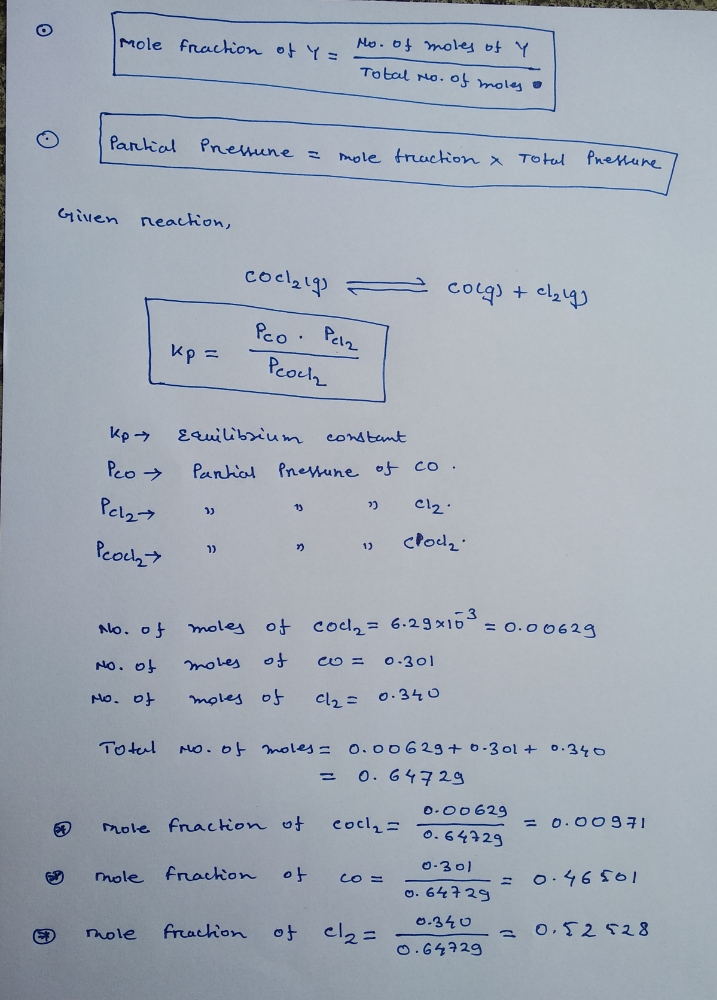aching and lea x + nent/takeCovalentActivity.do?locator=assignment-take [Review Topics] [References) Use the References to access important values if needed for this question. Consider the following reaction: COC,(g) CO(g) + Ch(g) If 6.29x10 moles of COCl,, 0.301 moles of CO, and 0.340 moles of Cl, are at equilibrium in a 15.5 L container at 763 K, the value of the equilibrium constant, Kp, is Submit Answer Retry Entire Group 8 more group attempts remaining Previous Next 7:38 PM 21 10/4/2020 (99+ %2:
Ionic Equilibrium
Chemical equilibrium and ionic equilibrium are two major concepts in chemistry. Ionic equilibrium deals with the equilibrium involved in an ionization process while chemical equilibrium deals with the equilibrium during a chemical change. Ionic equilibrium is established between the ions and unionized species in a system. Understanding the concept of ionic equilibrium is very important to answer the questions related to certain chemical reactions in chemistry.
Arrhenius Acid
Arrhenius acid act as a good electrolyte as it dissociates to its respective ions in the aqueous solutions. Keeping it similar to the general acid properties, Arrhenius acid also neutralizes bases and turns litmus paper into red.
Bronsted Lowry Base In Inorganic Chemistry
Bronsted-Lowry base in inorganic chemistry is any chemical substance that can accept a proton from the other chemical substance it is reacting with.
![**Equilibrium Constant Calculation**
Consider the following reaction:
\[ \text{COCl}_2(g) \rightleftharpoons \text{CO}(g) + \text{Cl}_2(g) \]
If \(6.29 \times 10^{-3}\) moles of \(\text{COCl}_2\), 0.301 moles of \(\text{CO}\), and 0.340 moles of \(\text{Cl}_2\) are at equilibrium in a 15.5 L container at 763 K, calculate the equilibrium constant, \(K_p\).
Fields for submission:
- **K_p:** [ Input Box ]
Buttons available:
- **Submit Answer**
- **Retry Entire Group**
Note: The question allows 8 more group attempts.](/v2/_next/image?url=https%3A%2F%2Fcontent.bartleby.com%2Fqna-images%2Fquestion%2F6bfb8691-d1db-4ddc-9d6d-d840f1ac88cb%2F8faee442-9229-4161-8bd7-807045b5260e%2Fpgfuhrj_processed.jpeg&w=3840&q=75)
![**Equilibrium Constant Calculation**
In this exercise, students are asked to determine the partial pressure of \( \text{NH}_3(g) \) using the equilibrium constant for the given reaction at a specific temperature.
**Given Reaction and Data:**
The equilibrium constant, \( K_p \), for the following reaction is \( 1.04 \times 10^{-2} \) at 545 K.
\[
\text{NH}_4\text{Cl}(s) \rightleftharpoons \text{NH}_3(g) + \text{HCl}(g)
\]
**Problem Statement:**
- An equilibrium mixture of the three compounds in a 0.51 L container at 545 K contains:
- 2.92 mol of \( \text{NH}_4\text{Cl}(s) \)
- 0.278 mol of \( \text{NH}_3(g) \)
- Calculate the partial pressure of \( \text{NH}_3(g) \) in the container. Enter your answer in the blank provided.
**Solution Steps:**
To find the partial pressure of \( \text{NH}_3(g) \), use the ideal gas law and the definition of the equilibrium constant.
1. Use the ideal gas law to calculate the pressure of \( \text{NH}_3(g) \).
2. Use the equilibrium expression for the reaction:
\[
K_p = \frac{P_{\text{NH}_3} \cdot P_{\text{HCl}}}{1}
\]
Since \( K_p \) and the amount of \( \text{NH}_3 \) are known, you can calculate the partial pressure of \( \text{NH}_3 \).
Ensure appropriate use of units and conversion factors to solve for the pressures accurately.](/v2/_next/image?url=https%3A%2F%2Fcontent.bartleby.com%2Fqna-images%2Fquestion%2F6bfb8691-d1db-4ddc-9d6d-d840f1ac88cb%2F8faee442-9229-4161-8bd7-807045b5260e%2F2o3mf97_processed.jpeg&w=3840&q=75)

Step by step
Solved in 2 steps with 2 images









